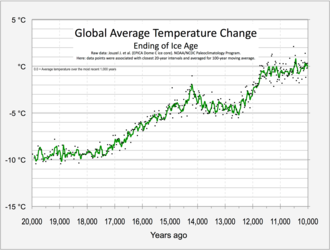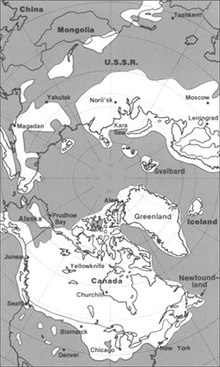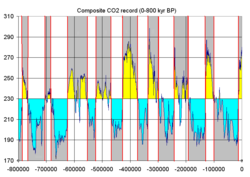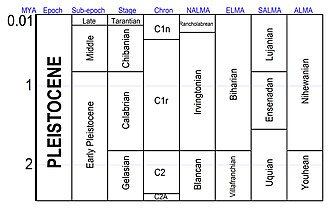Evolution of Man & Religion:
Mitochondrial Eve and Ancient Civilizations
by R.E. Slater
Mitochondrial Eve was a woman who lived 200,000 years ago who had enough daughters in a continuous chain that her Mitochondrial DNA survived. Homo sapiens eventually migrated across the African continent around 120,000 years ago
Looking at humanity's distribution patterns several items stand out as earth's climatic conditions changed forcing migratory movement:
- The L2 and L3 migrations re-inhabited Africa in three areas: NW, Central NE, and Southern NW regions.
- During this time the descendants of the L2 and L3 populations, N & M, travelled across the northern and southern parts of Saudi Arabia populating the Levant's coastal regions of Greater Syria (Israel et al) and the Fertile Crescent areas of the Mesopotamian area between the Tigris and Euphrates Rivers.
- Concurrently, Central India was also becoming populated which next led to homo sapien migrations into Oceania and Australia first, and much later into China directly from India.
- As China's populations grew so too were human migratory groups into Europe and Russian.
- From Russia's Land Bridge came the America's populations settling along warmer climes northward then southward.
Introduction
Today's post is more properly two posts in one. They should not be separated and must therefore be enclosed together. Think of it as a two day read rather than one....
Further below I have included several videos and articles related to today's title. However, my immediate interest today lies in humanity's shared common ancestry via Mitochondrial Eve, and from her generations, the newly birthed homo sapien civilizations which spawned around the world.
By now, many ancient civilizations had come-and-gone by the time the pages of Genesis were written down. A collection we know as "origin narratives" gathered from a dozen federated tribes composing one nation's enculturated ideas of a God they knew as Adonai (Lord), Yahweh (YHWH), and Elohim (the plural form of God which polytheists took as "gods" and for which the Abrahamic religions of Judaism, Christianity, and Islam took as the plural form of the singular God).
My evangelical church tradition does not delve much into it's ancient past. And when it does it proceeds along a common line of religiously approved divine ancestry. Here, in these recent series of posts I have been expanding from this tradition and have stated that even as the evolution of man was occurring so too was man's idea of God(s) taking root over long years of experience and observation. The first category speaks to man's origins; the other, to man's many layered enculturations of the divine.
Thus and thus we have an expanding evolution of modern man from his physique, his physiology, his sentient consciousness, epistemological awareness, individual and corporate behaviors, psyche, sociology, and religious development to mention a few. Consequently, humanity has been learning and maturing in its councils and actions.
My surmise here is that long before the bible was written - many, many, many eons of humanity had come-and-gone. As Christians, we like to start with a biblical Adam and Eve, a Serpent in the Garden of Eden, a Tower of Babel, and Noahic Flood. In a sense, all these event-types (or archetypes) had occurred but not as we think of them today with our nice-and-neat Sunday School flannel board pictures and "bible workbooks" from Baker Book House, Tyndale House, and such like.
Instead, picture the figures of "Adam & Eve" in terms of a processual biological evolution which God designed and initiated. The "Serpent and Garden" as the mythic birthplace of the very real-world ingredients of indeterminant freewill. The "Tower of Babel" as a nod by prior Semitic civilizations to their own experience of the mixing of tribal languages in growing population centers throughout Mesopotamia and Greater Syria. And finally, the "Noahic Flood" as the general rising of the oceans up-and-down, again-and-again, with every passing glacial era during Earth's long geologic history - but especially in stone age man's psyche of ice ages over the more recent past 1000,000 years of his evolutionary birth and species' biological development.
Somewhere I read, or heard again, that the great oceans had risen 115 feet during the Pleistocene Era due to the melting of the mighty glaciers spanning the northern 'scapes of the world. As they melted, regional flooding took place often and frequently. By comparison, even today we are going through a warming of the earth due to our own man-made climatic changes. And with it, earth's remaining glaciers are melting... including the polar ice caps. Near term water level predictions are estimating near a 15-20 foot rise in coastal waters around the world. Modern day cities like Miami's Atlantic-archipelago will eventually be underwater along with much of Florida's lowlying lands.
We may concede then that a general global flooding will eventually occur worldwide. It is part of Earth's geologic history - hastened by humanity's pollution - wherein recent evolutionary land masses will again come-and-go, shift-and-move (sic, Continental tectonic plates causing the movement of the continents propelled by the subduction of displaced heat and pressure).
The Noahic Flood then was not one flood but many. Some disastrous. And some annoying. Telling us then that the biblical record in Genesis is not unlike the rest of the bible's storied memories. Each one enculturated at one time or another in iconoclastic structure to share a quality of view by tribes or nations like Israel of their beliefs and nomadic religion turned "imperial" based upon more recent remembered events affecting their societies.
Now we might impute these climatic changes as divine events but more accuratey they are the resulting temporal changes due to earth's evolutionary processes set in place at creation's birth eons earlier.
Today, meta-modern faiths around the world are once again thinking about God in their minds and hearts due to startling climatic changes being witnessed everywhere around us. Those of faith, like myself, and those not of faith, are asking questions of God, or of society, in general. Humans are borne naturally curious. We examine and critique the processes we see around us. And are instinctually imaginative.
For my part, I am trying to redescribe God as the "God above or beyond the biblical page," utilizing the many good lessons and theologies in the Bible's pages and from my Christian heritage while removing, or adding, a more expansive theology better equipped to relate to the contemporary world we live in today.
By which I mean that one should never use the bible to delimit God because their theology does not fit the present context. Nor should we hold God's Spirit back from his work of salvation by our church doctrines and iconoclastic congregations. But I fear we are, and gravely so, and will describe how we have in the next section below.
The take away? We worship a God who expands to the needs and tasks of the present world at hand - thus, my evolving labour on what is becoming known as an Open and Relational Process Theology of Love. As the world changes so does God in his promises of loving care, tender mercies, and redeeming work laid before him. The bible then is a story of God... but not the final story - nor a final theology - about a God willfully connected to us ever-and-ever until our time ends along the evolutionary chain of "being and becoming".
R.E. Slater
March 11, 2023
Revised and Edited March 14, 2023
The Evolution of Man & Religion
Part 1
by R.E. Slater
One Conclusion Among Many
We know from paleo-genetic and paleo-archaeologic samplings that the Semitic and Indo-Asian cultures grew apace with one another during humanity's migratory journeys out of Africa. As they settled and lived within their separate regional geographies they each were experiencing their own histories earlier than the histories of later migratory groups as humanity extended outwards from i) the Greater Mesopotamia & Levant areas and, ii) the Central Indian areas. This is seen on the maps here provided.
For example, Africa had its own lores, legends and empires before, and later, concurrent with, ancient Egypt. Why? Because Africa was settled sooner and traded with each another eons earlier. Later, as other Near Eastern and Indo-Asian cultures (and empires) grew the intermix of their own cultures, ideas, trade, and power were extended into the older settled areas of Old Africa and places lije non-Indian Asia , China, Europe, and Russia.
The Evolution of Religion and Socio-Politics
In the last several posts I have been steadily moving towards the pre-historical times of Stone Age Semitic cultures which developed many, many eons before the pages of the bible were written down... consequently, it is important to realise that what narratives we read of in the bible were but selective cultural beliefs and understandings inherited many thousands of years earlier from prior civilizations. And as they did these beliefs - or theologies - also changed in accordance with greater sentient awareness gained from past experiences and observations.
As example, in our own life histories we would be hard pressed to say what are grandparents believed in their lifetimes or what their faith meant to them. We may know the general outlines of their faith but not much else. So too Israel's early faith as it developed. It may have come from an admixture of polytheistic and animistic beliefs and folklore but over the years God shared himself in their experiences and observations birthing a developing theology we know as Judaism today.
Within ancient Israel (approx., c.2000 BC - 70 AD) the narratives of its oral histories and beliefs were written down somewhere between 750-350 BC. These oral stories were constructed of what they "knew and understood from their geopolitical and religious existential perspectives" and should not be approached as historical or theological "gospel truths". And by these efforts the Hebrews were attempting to write their own "story of the world" from their own self-advantaged histories.
Much like Israel then, we read of faith failures and faith successes. And from such 'earthy" insights we, like they, are also adjusting our own ideas of who God is; what God does (or doesn't do); and even how God behaves in relationship to the world today. Like Israel then, we grow up with our church's teachings of God in religious contexts of lived experiences both individually and corporately.
And like Israel's priests and scribes, we ourselves, like our churches, are adjusting our attitudes and perspectives of God and ourselves by how we feel the world should work - and God in relation to this constructed world within our hearts and minds.
Assumptions of God and Our Responsibilities
I.
Looking backwards we make assumptions about our responsibilities and views of life. Mine own was how my religious culture taught me to read life through the church's views of God and people. But my public education and work-a-day experience in the world taught me that my religious teachings were overly bible-centric with a strong emphasis in it's interpretations of the bible and the narratives held within the bible. Which is all well-and-good except when it isn't.
Eventually we learn to read and live in the world alongside our church's teachings changing as we must when it's teachings become unhelpful to faith's journey. It's not the bible so much as our learned approach to the bible. Which becomes more like wearing spiritual blinders because of the church's interpretations rather than like the Spirit's reading glasses tuned to God's heart rather than religious dictums and legalisms.
Using the bible for our own religious claims about God-and-world seems to forget the more complex truth that we are not absolved from living in love with one another. This conclusion has become a more recent fundamental development in my bible reading and theological formulations. It is significantly different from other church theologies of God which are non-loving as I will explain...
II.
The other assumption I was taught by the church was that Israel's narratives got God right. Again, they did but they didn't....
Israel's God was a violent and avenging God.... But Jesus was nothing if not good, kind, and loving to the religious outsider.
The divine violence thing seems more a descriptor of myself than of God... A behavior which I suppose we all go through in some manner or another when wronged, hurt, injured, or suffering from the cruelty of others.
But from these assumptions of God have come religious wars, societal oppression, and the repugnant labelling of others who are different from ourselves repeating age-old errors of our theologies of God as wrathful and unloving. A God who dominates and rules over his foes. Churches should never be in the business of imperial kingdom-building though we may call it by "nicer" names of "winning communities for Jesus," or "membership classes," "congregational assimilation," and such like. The essence of these statements may be right and honest but the tone or nature of some churches belies their real intentions in oppressing individual rights in the name of God.
Nor should countries be in the business of sin and cruelty toward one another. Worshipping Gods of warfare is never healthy. But worshiping a God of love can usually be more healthy for a society of people trying to live together with one another.
Results of Our Religious Assumptions
Hence, what kind of God do we picture in our heads and hearts? What kinds of world experiences have given us these pictures? How assured can we be that the religious teaching of God in the bible were correct or incorrect? Why is God so often conflicted with God's self in portrayals of being unpresent then present; vindictive then loving; avenging then forgiving? Questions of Holy Spirit inspiration aside, what spirit are we actually listening to now or then?
When first beginning this website I questioned many times whether worshipping a dipolar God caught between the white-and-black sides of God's Self - sic, the "loving" v "unloving" sides of God's divine essence - whether this depiction of God was a wholly whole picture of God. I'm of the mindset that God is One and not two divided portions of his Divine Essence. That the ruling passion, essence, mind and heart of God is wholly loving.
That there is no room for a "divine" attribute of non-loving (except when beheld in the gods of the pagan world). That all other Divine Attributes are subserviant to God's love. Whether holiness, justice, or passions like zealousness, envy, etc, as described of God in the bible... all these attributes or descriptions of the divine character are founded upon, and derive their source from, God's Love.
And perhaps more helpfully, when introducing a processual theology into the religious world (or the church's) neo-Platonic thoughts of good-and-bad divine entities (gods/polytheism), objects (animism/American folklore) or the ephemeral divine qualities of God's self (dipolar v monopolar monotheism), we might see a fuller divine story of humanity trying to work out what God's loving presence can mean to us in relation to the world. God's responsibilities, care, guidance in loving processual fashion seem the more reasonable than a hard-and-fast dominionist, or judgmental, idol of human creation.
What We Are Taught v Who God Truly Is
A God who is perfectly, fully God and deserving of the title "holy" can only be seen by God's loving care of creation. In the usage of the word "holy" we have as often misspoke it as we have spoken it of God and God's presence.
1 - As in all other attributes=qualities=descriptors of God, divine love must proceed all other attributes to the formulaic Western mindset. Divine love cannot exist with Divine judgment as we think of it. God is not vengeful but restoring. And in that restoration comes goodness not evil. God is not evil. God is loving. Holiness describes the kind of God we worship.
2 - Most of us misuse the word holiness as referring to the absence of sin or evil in God. But holiness is more than these. Holiness refers to God more than the absence of willful harm and cruelty in God. But that in God is love which is neither cruel nor evil.
3 - And further, that this God is wholly whole, wholly holy, wholly UNdivided. That God is NOT a dipolar God but a God who is One. Holiness then refers to God's UNdivided divine Self in perfect congruity with God's divine Self. That God's holiness can be recasted as a fully loving God and not a God of love and wrath divided in God's personage as to who God is.
Conclusions
A processual theology can grant this kind of narrative. A non-processual faith cannot and results in churches today which are not conducting loving ministries to congregants and society but brutalizing their own and other by stories of God which are oppressive. Stories spoken to dominate their congregants with bible-beat-downs with unconstructive/bullying labels, guilts, manipulations, legalisms, harmful pietistic rituals, and inaccurately oppressive pictures of God.
A God who is none of these things. A God which the church has made an idol of from it's own pictures of how the world and God works. But here, at Relevancy22, such a biblical God is anathema. This kind of Christian God is unwanted, unpreached and untrue despite what Israel or the Church have concluded.
The bible-kind-of-God we worship here is a God who is wholly loving, good, kind, ministering, helping, aiding and present in our lives through all our good times and bad, joys and sufferings. This God does not control the world but seeks to redeem the world from itself. Not by the wraths and judgments we bring upon ourselves but through present relationships sharing loving kindness to one another.
























